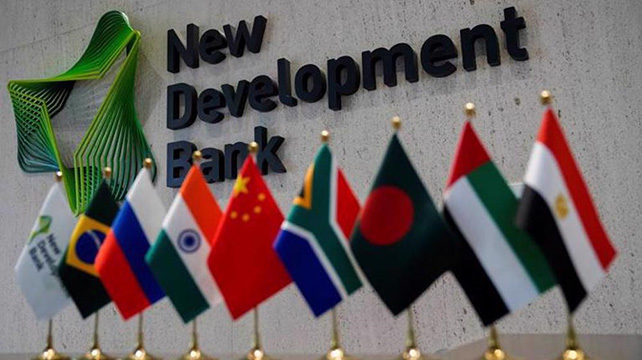 Photo: Reuters
Photo: Reuters
The idea of an alternative multilateral economic organisation like BRICS came from a belief in the late 2000s that the Bretton Woods Institutions were unable to cope with the scale and complexity of the post-Cold War geoeconomic landscape that had seen the rise of new economic centres. Western-led institutions had also become hostage to narrow geopolitical calculations and lacked the vision to co-opt major non-western powers as equal stakeholders at the high table. Then came the 2008 global financial crisis. It soon became apparent that the US was losing the capacity and will to write the next chapter on globalisation. BRICS (an acronym for Brazil, Russia, India, China, and South Africa) emerged as a stabilizer as well as a potential challenger to the old US-designed regime, and the first summit was held in 2009. BRICS represent about 27% of the world’s geographic areas and 42% of the world’s population, notes Zorawar Daulet Singh, an Indian historian and author of ‘Powershift: India-China Relations in a Multipolar World’.
With its 15th summit set to be held in Johannesburg from Aug 22-24, expansion is expected to be on the agenda. The proof that things are not quite working in the West-led model is the fact that dozens of countries, including Saudi Arabia, Argentina and Egypt, are lining up to join BRICS. There is a palpable demand across the Global South for responsive governance institutions that are not handmaidens of a single major power or bloc. BRICS’ weakness — that it lacks the cohesiveness of the West and that its members are not part of a common security or civilizational community — is actually its main virtue over the long term. The norm of equality has been enshrined as a conscious antithesis to the hierarchical Bretton Woods format. India bought into this process precisely because it is based on democratic governance structures.
We can point to three contributions of BRICS to the world. The first is normative power. While the majority of the world’s economies, including BRICS members, would like to increase their engagement with globalisation and with the West, they want to pursue this without having to change their political system, culture, domestic policies, foreign policies or civilizational identity in the process. BRICS legitimises such an inclusive globalisation model. In this sense, BRICS is not revolutionary in its world order outlook at all: it is merely seeking to buttress the concept of sovereignty and free will in international relations. The strings-attached approach of western geoeconomic engagement is being resoundingly rejected by the world.
Second, the most visible success for BRICS at an economic level has been the founding of the New Development Bank (NDB) in 2014. Since its launch, the NDB has financed almost 100 projects with US$34 billion, mainly in core infrastructure sectors (water, transportation, clean energy, digital etc.) that do not typically attract conventional forms of credit. Expanding the bank’s membership and hence its capital base will widen the development finance role of BRICS over time. According to one study, by the mid-2030s, the NDB could reach a loan stock of US$350 billion exceeding World Bank finance.
Another pressing issue that BRICS has been vocal about for years is the need for a sustainable global financial architecture that can support a trading and investment system of interdependence that is not dependent on a single currency. The Ukraine war, or rather the western response to it, has finally brought home the systemic risk in persisting with the old framework. Not only are countries that seek to voluntarily engage in a variety of commercial, energy and financial transactions being held hostage, the stability of the entire economic system is being jeopardised by the policy of a single power. This is an unacceptable and unsustainable state of affairs, especially if we are talking about a multipolar world order.
Therefore, devising means to insulate and protect economic interdependence is now a common strategic objective for BRICS.
The other big shock to BRICS has been the US attempt to illegally freeze $300 billion in Russian foreign currency reserves held in US treasury bonds. The US Treasury Secretary recently admitted, “We have on this small scale seized assets, but there are certainly legal challenges in doing more than that.” But the damage has been done. India, China, and dozens of other countries who invest heavily in US government bonds and park their gold reserves overseas must now reckon with the prospect of their sovereign assets being frozen or forfeited in a future crisis scenario. As Russia’s foreign minister Sergei Lavrov remarked last month, there is a desire by all BRICS members to develop financial mechanisms that secure them from “the arbitrariness of any external player”. He also clarified there are many ideas on how to achieve this.
If the 2008 global financial crisis was the initial impetus for BRICS, the ripple effects of the Ukraine war have been a turning point. The US weaponisation of public goods has alarmed even those states not hostile to the West for the necessity of a truly inclusive globalisation. BRICS is poised to play a vital role in the evolution of this process, Daulet Singh stresses.
read more in our Telegram-channel https://t.me/The_International_Affairs

 11:23 21.08.2023 •
11:23 21.08.2023 •






















